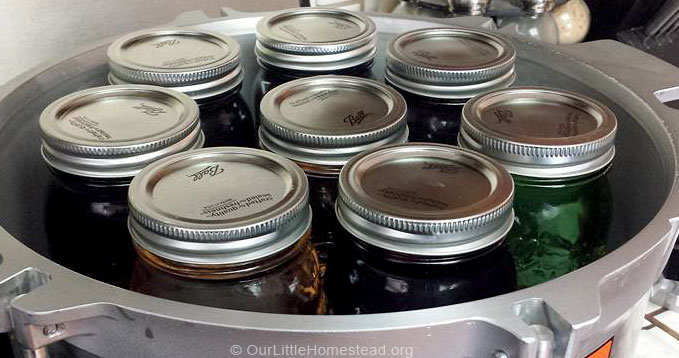
Please note that the following information is based on guidelines provided by the National Center for Home Food Preservation (USDA). People in countries other than the USA sometimes can using different procedures and processing. Just because a recipe isn’t tested by the USDA, does not mean it is not safe. You are responsible for your own health and safety. Use your own discretion when canning.
Canning Basics
The Science of Canning
Canning is the process in which food inside of a glass jar (or metal can) is heated to the temperature needed to kill food borne bacteria and harmful micro-organisms.
The process of canning also removes all oxygen from the inside of the jar as it cools and creates a vacuum seal so no oxygen can get to the food, keeping it protected from future micro-organisms.
There are 2 types of food you will be canning – low acid and high acid. The acidity of a food is determined by its pH level. A low pH is a more acidic food. A higher pH is a less acidic food.
Which brings us to our next point:
Pressure Canning vs. Water Bath
Pressure Canner (PC) – A pressurized pot that raises the temperature of the food in jars well above boiling for a certain amount of time at a specific pressure. The internal temperature of the food in the jar reaches 240° Fahrenheit. Pressure canning is ideal for low-acid foods (pH level higher than 4.6) such as meats and beans.
Pressure canners either have a dial (geared steam) gauge, weighted gauge, or both (dual gauge). A dial gauge can measure the pressure, but cannot control it. A weighted gauge controls the pressure, but cannot measure it. How to Pressure Can
Our absolute favorite pressure canner is the All American. It is heavy duty and the quality that will last for GENERATIONS – this is not an exaggeration. This pressure canner also requires no gaskets, it is a metal to metal seal so you don’t have to worry about replacing gaskets. It is well-worth the investment. (Note that since the COVID-19 pandemic, some sellers are advertising pressure canners as sterilizers – the below is still a pressure canner and the best and only one you will ever have to buy)


